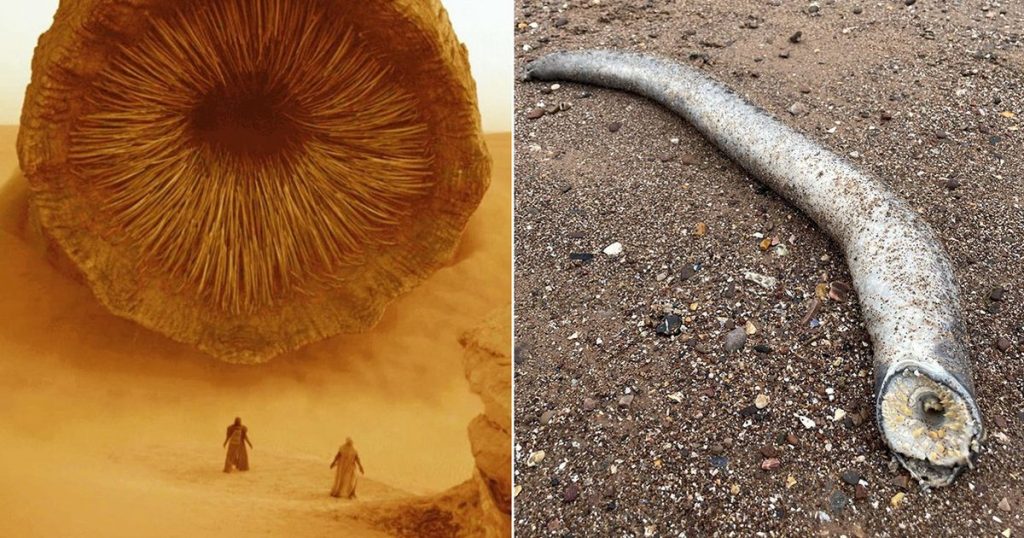A mysterious sea lamprey, known as the “vampire fish” due to its blood-sucking behavior, was discovered washed up on a beach near Exmouth Marina in Devon. The creature, described as resembling a giant leech with sharp, inward-pointing teeth, was found by Will Miles during a stroll after work. The sea lamprey, once common in UK waters, is now rare due to factors like low water quality and man-made barriers. Measuring around 80cm in length, the sea lamprey prompted comparisons to the sand worms from the movie Dune.
The discovery of the sea lamprey sparked interest and fear among Brits, with many taking to social media to share their reactions. Some likened the creature to the sand worms from the Dune films, while others expressed horror and vowed never to swim in the sea again. Marine biologist Jarco Havermans explained the life cycle of sea lampreys, mentioning that they live embedded in the bottom, filter-feeding detritus before metamorphosing into adult lampreys that migrate to sea to feed on larger fish species. The lamprey’s parasitic feeding habits often result in the death of its prey.
Various comments on social media highlighted the horror and fascination surrounding the sea lamprey, with references to sci-fi elements like Dune’s sandworms. Some joked about finding spice or references to the indigenous Fremen people. Others expressed fear of the ocean’s unknown creatures, describing the sea lamprey as a “fish of nightmares” and a “terrifying-looking creature.” The sea lamprey’s appearance and feeding behavior contribute to its reputation as a disturbing and otherworldly presence in the water.
Despite its rarity and limited presence in UK waters, the sea lamprey serves as a reminder of the diverse and often surprising marine life that exists. Its appearance and behavior evoke a mix of curiosity, fear, and respect for the complexities of ocean ecosystems. The discovery of the creature on a British beach sparked interest and conversation among the public, highlighting the mysterious and sometimes unsettling aspects of the natural world. Ultimately, the sea lamprey serves as a reminder of the diverse and often surprising marine life that exists beneath the surface of the sea.















